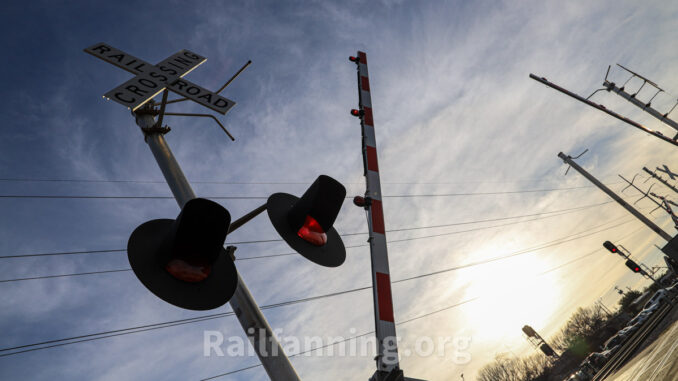
SAVANNAH, Georgia — Following an extensive application process, a federally designated Quiet Zone will be implemented on the Old Fort Rail line that runs through downtown Savannah starting Jan. 10.
Trains will no longer need to blow their horns through the crossings from Habersham Street to President Street, the first phase of the project. In the case of an emergency, trains will be allowed to blow their horns, per the parameters outlined by the Federal Railroad Administration (FRA).
“Prior to our 2019 term the ask and demand was pushed forward by the community to address this quality of life issue,” District 2 Alderman Detric Leggett said. “We saw the need and along with city staff made contacts, partnerships, and collaborative efforts to get this done. Today, we’re proud to be a step closer to tranquility in the neighborhood.”
This is the first portion of a multi-phase project the city of Savannah is working on with partners at the FRA, Georgia Department of Transportation (GDOT), CSX and WATCO. The next phases of the Quiet Zone will focus on Habersham to 52nd St.
“This is a wonderful step in the right direction in our quest to bring balance and address quality of life concerns in Midtown Savannah,” District 4 Alderman Nick Palumbo said. “A special thanks is in order to our City Staff as well as our neighborhood associations and industry partners for keeping the momentum forward on this initiative. I look forward to the continued work as we strive to extend the quiet zone further.”
The city has been seeking the Quiet Zone designation for a number of years following resident complaints about the increased train traffic and noise due to growing industry. The process executed with assistance from GDOT addressed several crossings. Gates and lights were added to five crossings and two crossings were discontinued.
This infrastructure work on property not owned or operated by the city allowed for the targeted zone to reach a safety standard that qualified for the Quiet Zone. The safety risk index for the area in phase one is lower than the national threshold.
“We’re very happy to see phase one of the Quiet Zone go into effect,” City of Savannah Director of Policy and External Affairs Joseph Shearouse said. “For 10 years, we’ve been working with our local rail operator, WATCO, and the Old Fort Line owner CSX, as well as GDOT and FRA with the goal of improving quality of life for our residents and to eventually earn this Quiet Zone designation. We have more work to be done, but we have reached a huge milestone in this project. We are grateful to all of our partners who continue to work with us on this.”
City officials said they will conduct a site visit with GDOT for the next phase of the Quiet Zone soon in the hopes of pushing it forward in the coming years.

